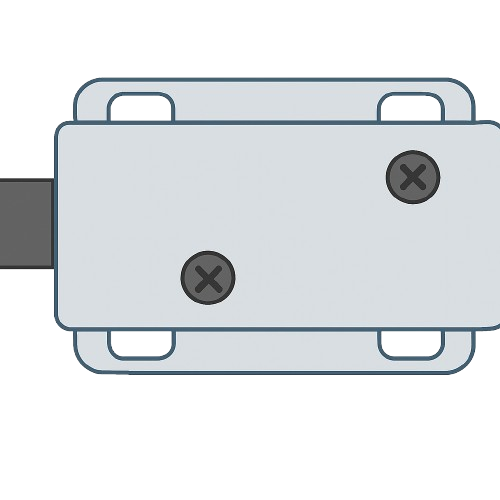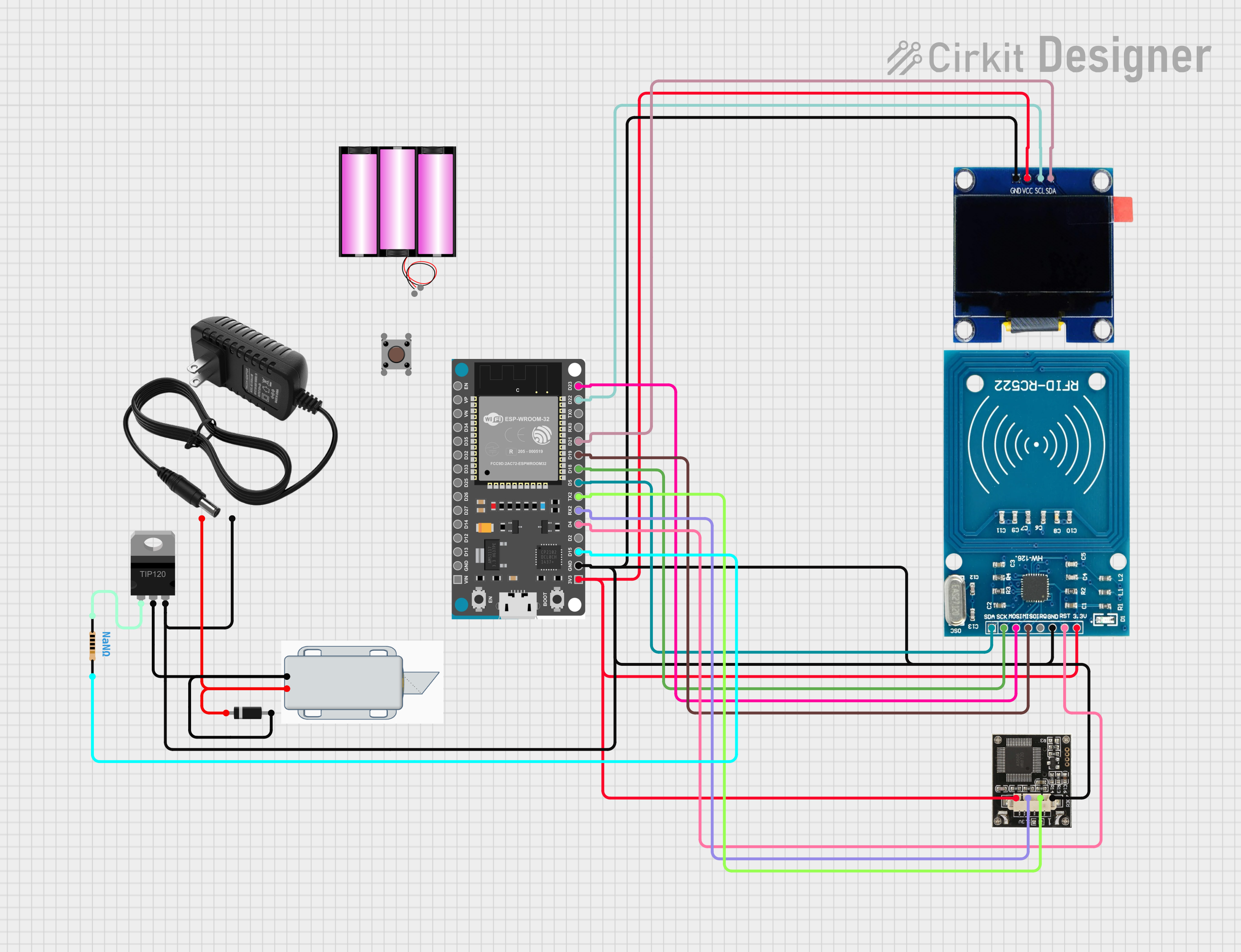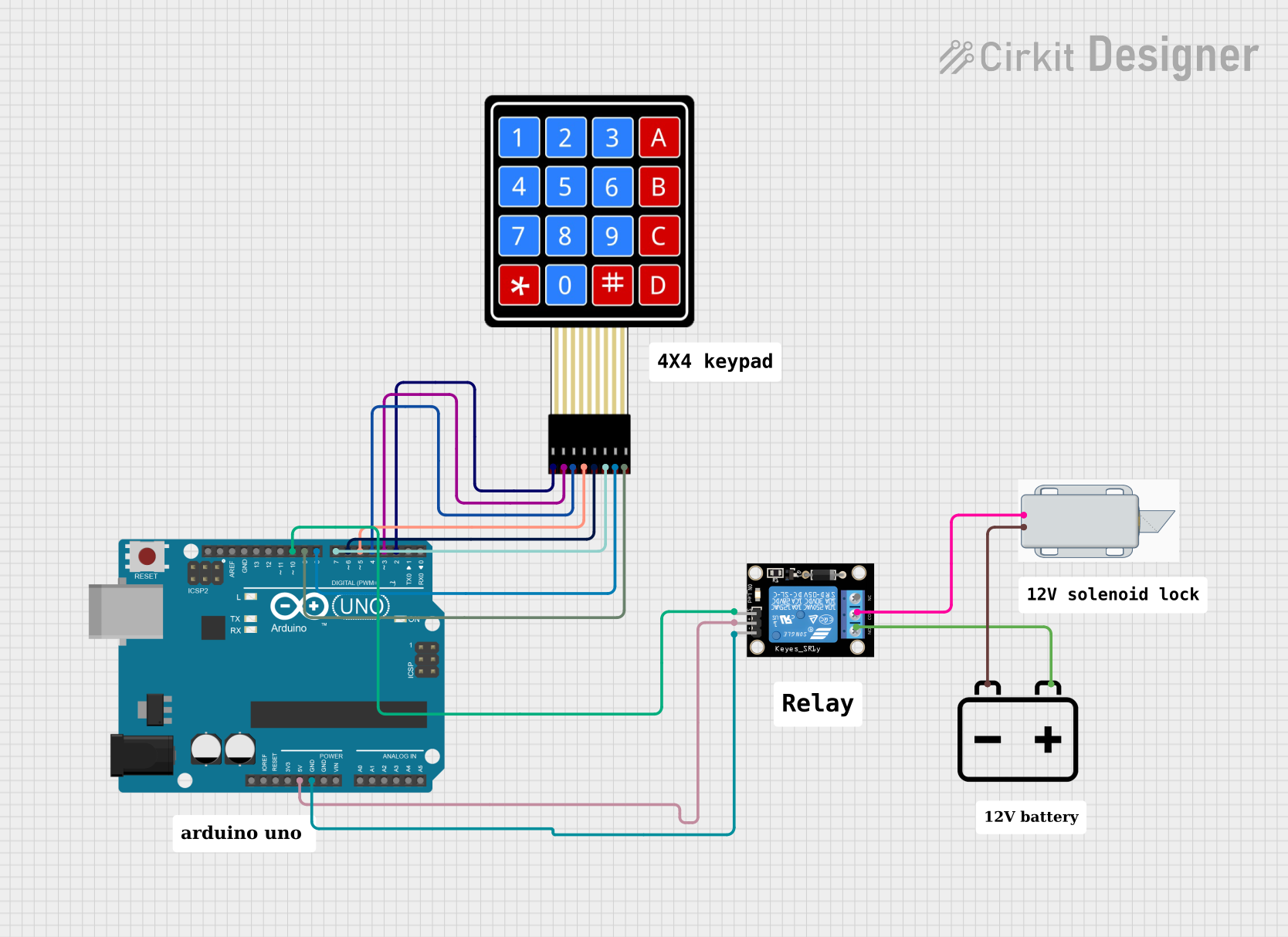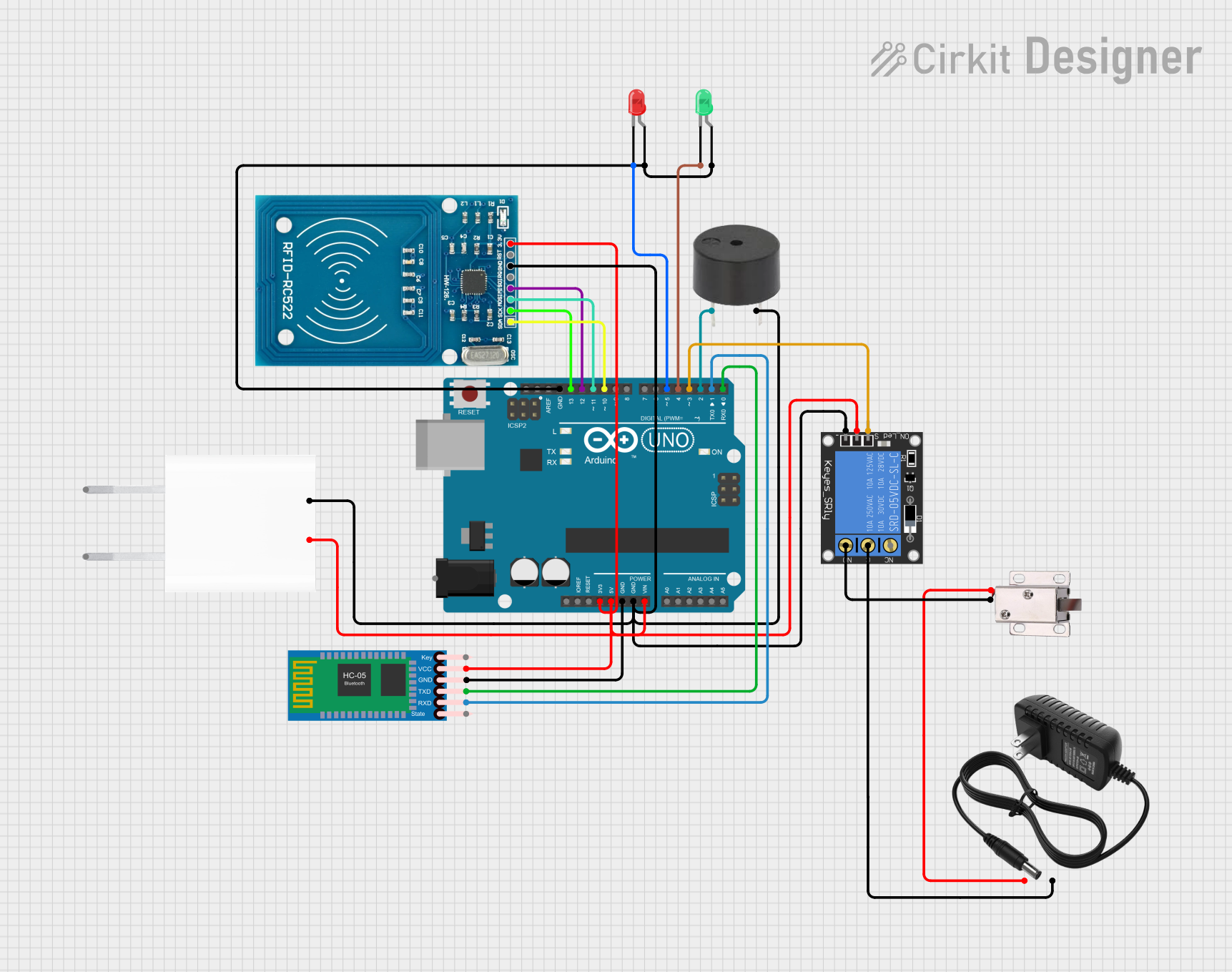
How to Use 12V Solenoid Lock: Examples, Pinouts, and Specs

 Design with 12V Solenoid Lock in Cirkit Designer
Design with 12V Solenoid Lock in Cirkit DesignerIntroduction
The 12V Solenoid Lock is an electromechanical device designed to secure or release a locking mechanism using an electromagnetic solenoid. When a 12V DC power supply is applied, the solenoid activates, retracting the locking pin to unlock the mechanism. Once the power is removed, the spring-loaded pin returns to its locked position. This component is widely used in access control systems, vending machines, lockers, and other security applications.
Explore Projects Built with 12V Solenoid Lock

 Open Project in Cirkit Designer
Open Project in Cirkit Designer
 Open Project in Cirkit Designer
Open Project in Cirkit Designer
 Open Project in Cirkit Designer
Open Project in Cirkit Designer
 Open Project in Cirkit Designer
Open Project in Cirkit DesignerExplore Projects Built with 12V Solenoid Lock

 Open Project in Cirkit Designer
Open Project in Cirkit Designer
 Open Project in Cirkit Designer
Open Project in Cirkit Designer
 Open Project in Cirkit Designer
Open Project in Cirkit Designer
 Open Project in Cirkit Designer
Open Project in Cirkit DesignerCommon Applications and Use Cases
- Electronic door locks
- Smart lockers and cabinets
- Vending machines
- Automated access control systems
- DIY security projects
Technical Specifications
Key Technical Details
| Parameter | Value |
|---|---|
| Operating Voltage | 12V DC |
| Current Consumption | ~0.8A (800mA) |
| Power Consumption | ~9.6W |
| Locking Mechanism | Spring-loaded |
| Material | Metal (housing and pin) |
| Dimensions | Varies (commonly ~55x40x27mm) |
| Weight | ~150g |
| Duty Cycle | Intermittent (avoid prolonged activation) |
Pin Configuration and Descriptions
| Pin Name | Description |
|---|---|
| V+ | Positive terminal for 12V DC power input |
| GND | Ground terminal for 12V DC power input |
Usage Instructions
How to Use the Component in a Circuit
- Power Supply: Connect the solenoid lock to a 12V DC power supply. Ensure the power supply can provide at least 1A to handle the solenoid's current draw.
- Control Circuit: Use a transistor, relay, or MOSFET to control the solenoid lock. Directly connecting it to a microcontroller is not recommended due to the high current requirements.
- Diode Protection: Place a flyback diode (e.g., 1N4007) across the solenoid terminals to protect the circuit from voltage spikes caused by the solenoid's inductive load.
- Activation: Apply 12V DC to the solenoid to retract the locking pin. Remove the power to return the pin to its locked position.
Important Considerations and Best Practices
- Avoid Overheating: The solenoid lock is designed for intermittent use. Prolonged activation can cause overheating and damage the component.
- Power Supply: Use a stable and regulated 12V DC power source to ensure reliable operation.
- Mounting: Securely mount the solenoid lock to prevent movement during operation.
- Polarity: Ensure correct polarity when connecting the power supply to avoid damage.
Example: Controlling the Solenoid Lock with an Arduino UNO
Below is an example of how to control the 12V Solenoid Lock using an Arduino UNO and an NPN transistor (e.g., 2N2222) as a switch.
Circuit Diagram
- Connect the solenoid lock's V+ to the 12V power supply.
- Connect the solenoid lock's GND to the collector of the NPN transistor.
- Connect the emitter of the transistor to the ground of the power supply.
- Place a flyback diode (e.g., 1N4007) across the solenoid terminals, with the cathode connected to V+.
- Connect a 1kΩ resistor between the Arduino digital pin and the base of the transistor.
Arduino Code
// Define the pin connected to the transistor's base
const int solenoidPin = 7;
void setup() {
// Set the solenoid control pin as an output
pinMode(solenoidPin, OUTPUT);
}
void loop() {
// Activate the solenoid lock
digitalWrite(solenoidPin, HIGH);
delay(1000); // Keep the lock open for 1 second
// Deactivate the solenoid lock
digitalWrite(solenoidPin, LOW);
delay(1000); // Wait for 1 second before reactivating
}
Troubleshooting and FAQs
Common Issues and Solutions
The solenoid lock does not activate:
- Check the power supply voltage and current. Ensure it provides 12V DC and at least 1A.
- Verify the connections, especially the polarity of the power supply.
- Ensure the control circuit (e.g., transistor or relay) is functioning correctly.
The solenoid lock overheats:
- Avoid keeping the solenoid activated for extended periods. Use a timer or PWM control to limit activation time.
- Check for any obstructions in the locking mechanism that may cause excessive current draw.
Voltage spikes damage the circuit:
- Ensure a flyback diode is installed across the solenoid terminals to suppress voltage spikes.
The locking pin does not retract fully:
- Verify that the power supply is providing sufficient current.
- Check for mechanical obstructions or misalignment in the locking mechanism.
FAQs
Q: Can I power the solenoid lock directly from an Arduino?
A: No, the solenoid lock requires more current than the Arduino can provide. Use a transistor, relay, or MOSFET to control the solenoid.
Q: What type of diode should I use for flyback protection?
A: A general-purpose diode like the 1N4007 is suitable for this application.
Q: Can I use a 9V battery to power the solenoid lock?
A: No, a 9V battery cannot provide sufficient voltage or current. Use a regulated 12V DC power supply instead.
Q: How do I prevent overheating during continuous use?
A: Limit the activation time and allow the solenoid to cool between activations. Use a duty cycle of less than 50% for extended operation.